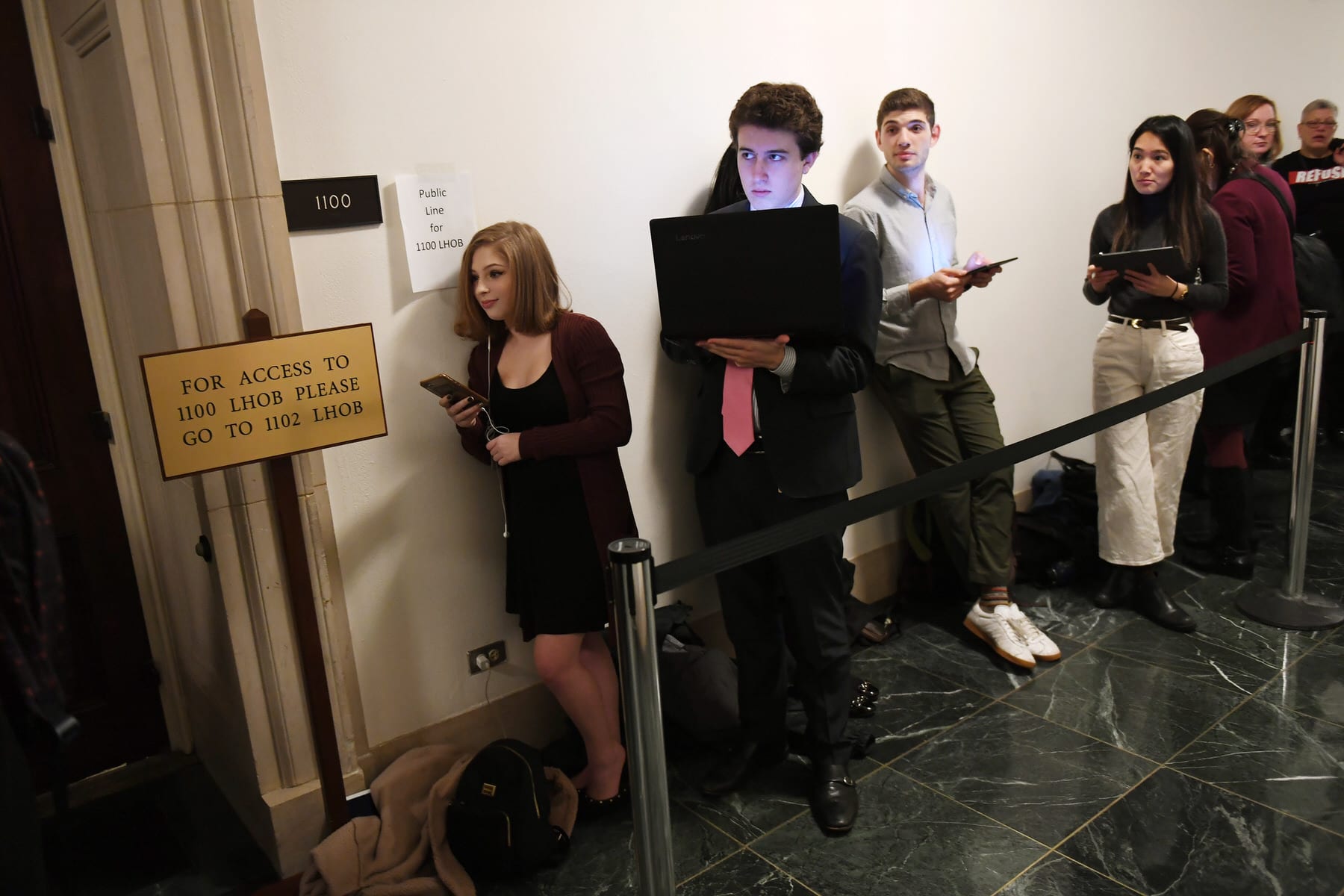When Ayanna Pressley was a college student in Boston in the 1990s, she had an internship for then-U.S. Rep. Joseph P. Kennedy II. Pressley remembers arriving at her interview for the job with a professional suit from a now-defunct store called “Hit or Miss” and holding a briefcase she bought at a thrift store. The briefcase had a combination lock that prevented Pressley from opening it, but she brought it anyway to look the part.
Pressley went on to file paperwork, staffed formal events and made coffee, like the other interns. She also worked several part-time jobs, because the internship at one of Kennedy’s district offices was unpaid.
“Most of the other interns that I was around were the kids of donors,” Pressley told The 19th. “They were not diverse, and so I was a minority in every way: one of very few women, one of the youngest, one of few people of color, sometimes the only intern of color.”
Pressley didn’t know it then, but the internship would put her on a path toward becoming a member of Congress with her 2018 election. It’s why congressional internships and their lack of diversity then and now raise questions about the inclusivity of a key pipeline to becoming a policymaker in Washington. And a new report offers the first comprehensive snapshot of the glaring gaps that remain in both paid and unpaid opportunities on the Hill.
Pay Our Interns, a nonprofit started by former unpaid congressional interns, analyzed more than 8,000 pages of new payroll data to compile racial and gender diversity on more than 3,800 interns who worked for members of Congress. They concluded that paid interns are overwhelmingly White, representing more than three-quarters of paid congressional interns.
The report, scheduled for release Thursday, uses data from between April and September 2019. It’s the most complete data after Congress approved funding for paid internships at the end of 2018, and data afterward was complicated by the coronavirus pandemic.
Congressional internships serve as a pipeline for future work in politics and policymaking, including as advisers and members of Congress, said Carlos Mark Vera, co-founder and executive director of Pay Our Interns. When Vera was a student at American University in 2012, he had an unpaid internship for then-Rep. Joe Baca of California. Vera worked a part-time job to make the setup work. He went on to have additional unpaid internships at the White House, but he turned down work at a federal agency because it was unpaid.
“Millions of dollars now go toward fundraising to get candidates of color into elected positions,” he said. “There’s little to no resources focused on the staffing side. Interns are the beginning of the pipeline. … It has to be a two-pronged approach.”
Other findings in the report:
- Paid interns at the time studied were 76.3 percent White, 7.9 percent Latino, 7.9 percent Asian/Pacific Islander, 6.7 percent Black and 0.03 percent American Indian/Alaska Native.
- Nearly half of paid interns attended or are currently attending private universities, but they only make up 25 percent of undergraduate students. There is little or no representation from community colleges.
- The top three private universities with paid congressional interns are all in Washington, D.C.: American, Georgetown and George Washington universities. But there’s a significant drop to the next private university, also in D.C.: Howard University, a historically Black college.
- Women represented more than half of all paid interns (56 percent in the U.S. Senate and 51.3 percent in the U.S. House). Women make up just 24 percent of all members of Congress. There is no available data on nonbinary people or members of the LGTBQ+ community.
- The average total stipend per intern was approximately $1,986.75 in the U.S. Senate and $1,612.53 in the U.S. House, for internships that last on average about a month. The group says that average pay is not enough to live in D.C. without a second paid job, a loan, or financial support from family or their university.
- Lawmakers of color make up 24 percent of members of Congress but employ 33.5 percent of paid interns of color. Lawmakers of color in the House specifically employ 46 percent of all paid interns of color.
As the importance of internships in getting a job has grown, so has attention to the state of unpaid and paid internships in America. Pay Our Interns formed in 2016 and later released a report showing just 10 percent of congressional interns were paid.
In 2018, Congress approved $14 million for legislative interns, designating $20,000 to each House office and an average of $50,000 for each Senate office. That funding was later increased to $17.3 million, though not every member uses it.
Pressley said she is not surprised by disparities found in the latest report, calling it “infuriating and disappointing that the numbers are still that anemic.” After her unpaid internship, Pressley went on to become a paid staffer for Kennedy before she worked for more than a decade for John Kerry, then a U.S. senator. In 2009, she was elected to Boston’s city council, becoming the first Black woman to serve on the council. In 2018, she became the first Black woman elected to Congress from Massachusetts. Pressley ties it all back to the internship.
“That internship changed the trajectory of my life,” Pressley said. “And I never could have anticipated that. But because it did, I’m very intentional about our recruitment, our hiring and our placement of interns. And certainly of interns coming from low-income, diverse and immigrant backgrounds.”
Pressley called on other members of Congress to be more intentional in their recruitment of interns, including paying them a living wage of at least $15 an hour and ensuring the work environment is inclusive. Such internships lead to paid staff opportunities, which also currently lack diversity.
“That lack of representation is a disservice, both to the constituents that those offices are there to represent and to serve, but it does a disservice to the policymaking,” she said.
The underrepresentation of people of color in paid congressional internships is one piece of a larger problem, according to Vera. Interns on some congressional committees are not paid, and unpaid internships for members persist.
Adele McClure was a 17-year-old high school senior in 2007 when a teacher connected her with an opportunity to work on the U.S. House Ways and Means Committee. McClure remembers a predominately White class of interns.
McClure would leave school early for a two-hour commute to the Capitol. On top of that, she had two part-time jobs to help her mother, who was also working around the clock.
“Just to arrive there I was already exhausted. But I didn’t show it,” McClure said.
McClure, now the executive director of the Virginia Legislative Black Caucus, serves on the board of Pay Our Interns. She said equitable internships on the Hill are crucial to diversifying the face of policymaking. She said for the next decade, employers immediately asked her about her congressional internship.
“There are barriers that exist, especially in the lives of BIPOC folks and people who grow up in low-income communities or grow up facing systemic issues,” she said. “There are further barriers placed on the person who is participating in an internship when it’s unpaid.”
Pay Our Interns has expanded its mission beyond Congress. In addition to pushing for legislative committee interns to be paid, Pay Our Interns is asking the White House to pay its interns. The group is also recommending that Congress increase existing funds for paid interns, that Congress keep more thorough records on the racial and gender diversity of its interns, and that it do more to recruit students from diverse backgrounds.
“They’re at the center of it all,” Vera said of Congress. “Not only for their own offices, but for everything else in the federal government.”






